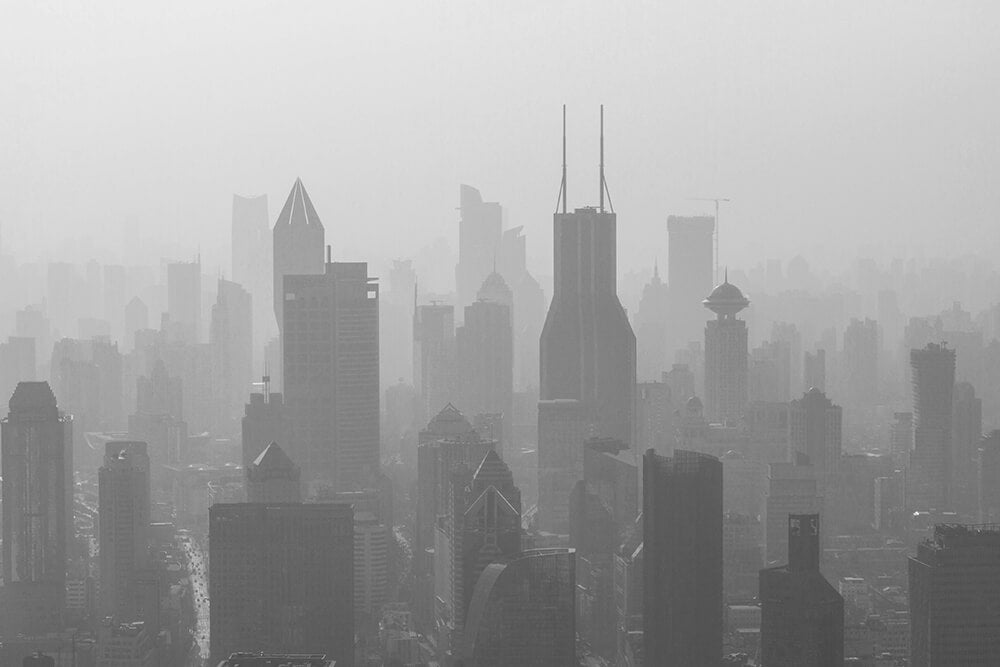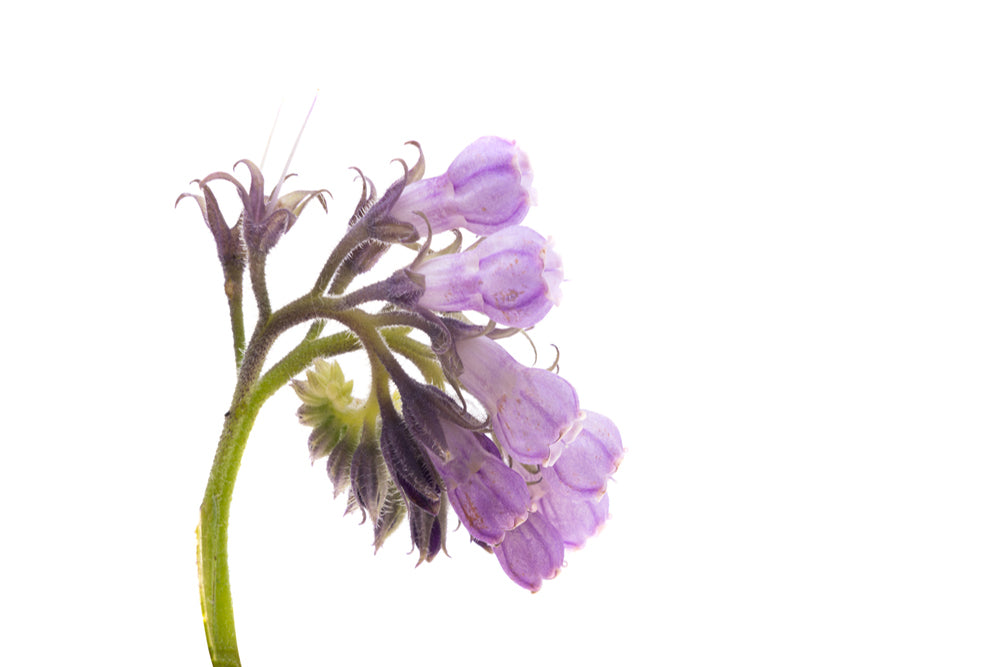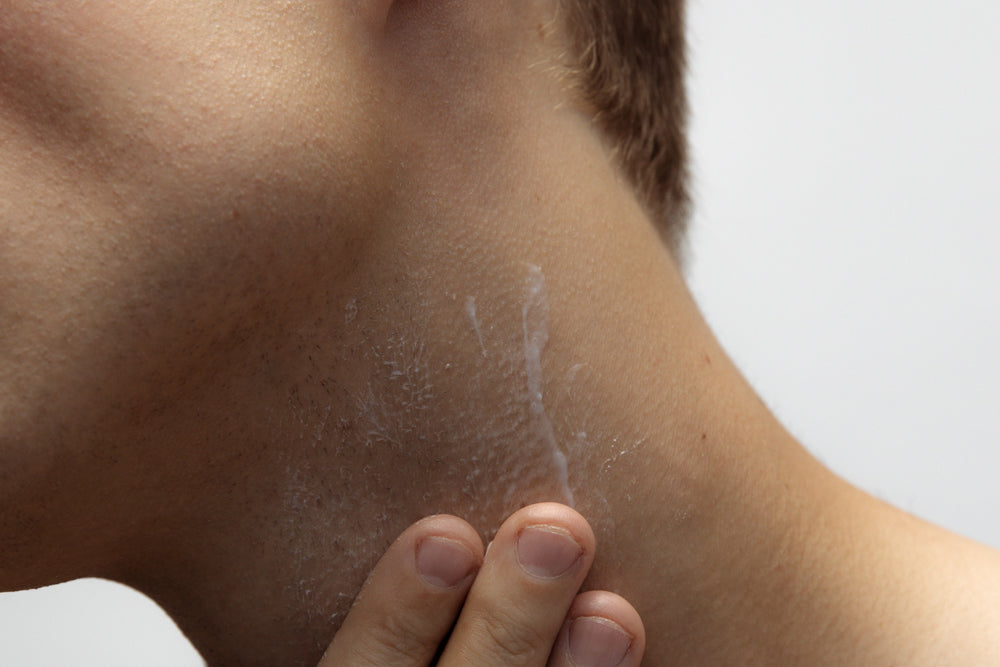
the effects of air pollution on skin health

the bottom line
We’re exposed to air pollution on a daily basis, whether it comes from living in the city, smoking cigarettes, or even fumes from active wildfires. While our skin is designed to act as a barrier to chemical and physical pollutants, prolonged exposure to high levels of these toxins can profoundly affect our skin health. Keep reading to learn more about the many ways in which air pollution can affect our skin, and how to mitigate the damage.
first layer: types of pollution and how it happens
What is pollution? Pollution is defined as contamination of the environment with materials that affect human health, quality of life, or the ecosystem. The four types of pollution include water pollution, air pollution, noise pollution, and soil pollution. Air pollution is the contamination of the indoor or outdoor environment by any chemical, physical, or biological agent that changes the natural characteristics of the atmosphere. Potential sources of air pollution include volcanic eruptions, forest fires, pollen, radioactive materials, vehicle emissions, and fossil fuels.
second layer: air pollutants and the skin
As the largest organ of the human body, the skin acts as a physical, chemical and immunological barrier. Air pollutants can be absorbed directly through the skin, via hair follicles, and even through sweat glands. When the level of exposure to environmental toxins exceeds the skin’s natural ability to defend itself, the function of the skin’s barrier is affected, and various skin diseases can be the result.
Air pollutants damage skin by increasing oxidative stress*, which in turn results in genetic damage and kinases* involved in degradation of the connective tissue*. In the skin, this can manifest as extrinsic skin aging*; inflammatory or allergic conditions including contact dermatitis*; atopic dermatitis*; psoriasis*; acne*; and skin cancer. Specific pollutants which are of particular concern to public health include the following:
- ultraviolet (UV) radiation – UV radiation has different effects on the human skin according to the specific wavelength. UVA is responsible for extrinsic skin aging with coarse wrinkles, solar elastosis*, teleangiectasias*, and pigmentation. UVB is implicated in sunburns, while UVA and UVB are both responsible for skin cancers including basal cell carcinoma, squamous cell carcinoma, and melanoma. When UVA and UVB are combined with common environmental pollutants, these effects become significantly more pronounced.
- cigarette smoke – we’ve said it before, and we’ll say it again – cigarette smoke is really, really bad for your skin. Cigarette smoke is a complex aerosol which contains literally thousands of chemical substances, including reactive oxygen species (ROS)* and carbon monoxide. Reactive oxidants and free radicals from cigarette smoke lead to oxidative stress. The result is an increase in transepidermal water loss (TEWL)* and degradation of elastin and collagen fibers in the skin. Smoking is associated with premature skin aging including deep wrinkles around the mouth and skin discoloration. Additional skin conditions linked to smoking include psoriasis*, acne, and squamous cell carcinoma.
- polycyclic aromatic hydrocarbons (PAH) – polycyclic aromatic hydrocarbons are some of the most dangerous and ubiquitous organic pollutants. Their main sources include wood burning, auto exhausts, diesel fumes, plastic and pesticide production, and smoke. PAH have been associated with extrinsic skin aging, pigmentation, acne, and skin cancer.
- ozone – ozone is a gaseous oxidant of the stratosphere and troposphere. Its levels on the ground are typically low, but when ozone interacts with UV radiation, hydrocarbons, volatile organic compounds, and nitrogen oxides, it becomes an active component of smog. Ozone exerts its negative effects by inducing oxidative stress and reducing the levels of antioxidants. The result is extrinsic skin aging, although there have also been associations with eczema* and contact dermatitis*.
- particulate matter – incinerators, automobiles, fires, and natural dust are all sources of particulate matter. Particulate matter contains elements of varying size and composition which can enter the body through both the skin and hair follicles. Again, it generates oxidative stress, resulting in extrinsic skin aging and possibly atopic dermatitis.
- volatile organic compounds – volatile organic compounds may be released from organic solvents in paint and varnishes, tobacco smoke, stored fuels, car exhausts, and industrial facilities. Volatile organic compounds have been associated with an increase in atopic dermatitis.
- oxides – nitrogen oxides are emitted from combustion sources. Nitrogen dioxide creates oxidative damage which in turn leads to the formation of free radicals and tissue damage. Sulfur dioxide from the atmosphere results from industrial fuel combustion, volcanic activity, and forest fires, while carbon monoxide severely affects cell metabolism. Oxides have also been linked to eczema.
third layer: how to address air pollution
Clearly, the issue of air pollution is a much larger one than can be addressed in a blog about skincare. Measures to control air pollution include decreasing the use of personal vehicles, improving public transport, and increasing the use of biofriendly fuels. Personal protection measures include physical protection with the daily use of sunscreen, using topical antioxidants, and introducing indoor air purifiers and ventilators.
fourth layer: how we do it
Given the tremendous potential effects of air pollution on our skin, we have a few recommendations:
- cleanse, and cleanse again: cleansing your skin twice daily has never been more important. Double cleanse by beginning with an oil cleanser to lift oil, dirt, and pollutants, then follow with a cream cleanser to wash everything away. We recommend our rice & pomegranate facial cleansing oil followed by our oatmeal cleansing milk or rice & hinoki facial cleanser.
- antioxidants: we need all the help we can get in the battle against free radicals. Use a serum or oil with antioxidants daily to help decrease the risk of premature extrinsic aging. Our bakuchiol & pomegranate facial oil contains bakuchiol, pomegranate, sea buckthorn, rosehip, bisabolol, and coenzyme Q10 to help decrease the appearance of fine lines, pigmentation, and acne.
- skin barrier: we’ve spoken before about the critical role the skin barrier plays in protecting us from the elements. Support it with our rosehip replenishing balm. Created as a soothing and protective scar remedy for Dr. Naidu’s surgical patients, some of our customers also apply it to the face to seal in hydration and soften rough spots. Innovation applauded.
- sunscreen: the importance of sunscreen can’t be stressed enough. Use it daily, rain or shine. While we don’t yet offer a sunscreen, we recommend one with an SPF of at least 30. Reapply it every two hours if you’ll be outside during the day.
All this and more at www.anokhaskincare.com .
xx
anokha
references:
- Puri P, Nandar SK, Kathuria S, Ramesh V. Effects of air pollution on the skin: A review. Ind J Dermatol Venereol Leprol 2017; 83(4): 415-423.
- Abolhasani R, Araghi F, Tabary M, et al. The impact of air pollution on skin and related disorders: A comprehensive review. Dermatol Ther 2021; 34: e14840-e14851.
- WHO Air Quality Guidelines for Particulate Matter, Ozone, Nitrogen Dioxide, and Sulfur Dioxide. Global Update 2005. Summary of Risk Assessment, 2006. https://www.who.int/phe/health_topics/outdoorair/outdoorair_aqg/en/.
- Badouin C, Charveron M, Tarroux R, Gall Y. Environmental pollutants and skin cancer. Cell Biol Toxicol 2002 ; 18 : 341-348.
- Xu F, Yan S, Wu M, et al. Ambient ozone pollution as a risk factor for skin disorders. Br J Dermatol 2011; 165: 224-225.
- Kim J, Kim EH, Oh I, et al. Symptoms of atopic dermatitis are influenced by outdoor air pollution. J Allergy Clin Immunol 2013; 132: 495-498.e1.
- Kim EH, Kim S, Lee JH, et al. Indoor air pollution aggravates symptoms of atopic dermatitis in children. PLoS One 2015; 10: e0119501.
definitions:
acne: acne is a skin disease that arises secondary to the combination of four factors: increased sebum production secondary to increased androgen production; abnormal keratinization within the follicles with resulting obstruction; proliferation of Propionibacterium acnes; and inflammation.
atopic dermatitis: a type of eczema remarkable for red, flaky, itchy skin, typically affecting the inner elbows and behind the knees. it's often seen with allergic rhinitis, hay fever, and asthma.
connective tissue: connective tissues bind structures together to form a framework and support for organs.
contact dermatitis: a skin rash caused by contact with a specific substance. avoiding the trigger typically allows the rash to clear in 2-4 weeks.
eczema: a congenital inflammatory skin condition associated with dry, itchy skin; also referred to as atopic dermatitis
extrinsic skin aging: skin aging induced by environmental factors
kinase: kinases are enzymes that add phosphates to other molecules.
oxidative stress: oxidative stress occurs when the number of free radicals outnumbers antioxidants.
psoriasis: psoriasis is a skin disease characterized by a rash with itchy and scaly patches, typically found on the knees, elbows, trunk, and scalp.
reactive oxygen species: a type of unstable molecule that contains oxygen, and which can react with other molecules in a cell. they can damage DNA, RNA, proteins, and even cause cell death. also referred to as free radicals.
skin barrier: the skin barrier protects against external agents including mechanical and chemical insults, heat, pathogens, water, and radiation.
solar elastosis: solar elastosis is a degenerative condition of elastin in the dermis as a result of prolonged sun exposure.
telangiectasia: dilation of the capillaries which makes them appear as red or purple clusters on the surface of the skin.
transepidermal water loss: “transepidermal water loss”, or TEWL, is the normal movement of water from the stratum corneum to the atmosphere.
faq’s:
what is pollution?
pollution is defined as contamination of the environment with materials that affect human health, quality of life, or the ecosystem.
what is air pollution?
air pollution is the contamination of the indoor or outdoor environment by any chemical, physical, or biological agent that changes the natural characteristics of the atmosphere.
what are some sources of air pollution?
sources of air pollution include volcanic eruptions, forest fires, pollen, radioactive materials, vehicle emissions, and fossil fuels.
what are some solutions to air pollution?
potential solutions to the issue of air pollution include decreasing the use of personal vehicles, improving public transport, and increasing the use of biofriendly fuels.



Hinterlasse einen Kommentar
Diese Website ist durch hCaptcha geschützt und es gelten die allgemeinen Geschäftsbedingungen und Datenschutzbestimmungen von hCaptcha.